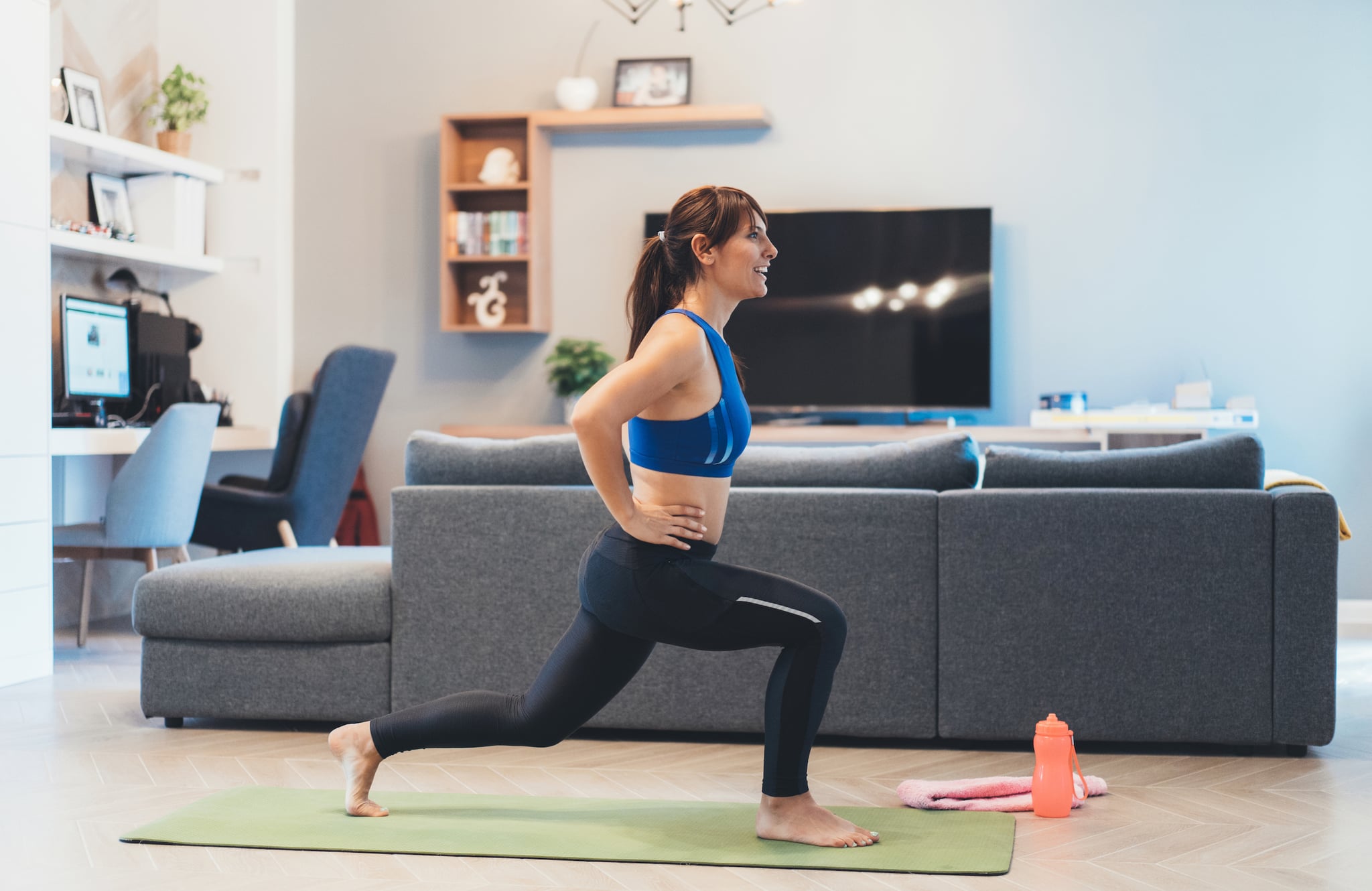
In general, lunges are pretty polarizing — and if a set or two always leaves you with achy knees, we know exactly where you stand.
While lunges can quickly amp up your at-home workout, the lower-body move can also cause irritating pain in your knees if you already deal with knee issues, or if your form just isn’t quite up to par.
For tips on how to perfect your lunge form — so knee pain hopefully isn’t an issue — we reached out to Katie Mack, a NSCA-certified personal trainer.
Read on for her quick tips on how to make lunges less aggravating to your knees. For answers specific to you, or if you have any concerns about what you’re feeling, reach out to your healthcare provider.
Watch Your Front Foot Form
“Make sure you are keeping your whole foot of the front leg in contact with the floor!” Mack urges. “I commonly see people coming forward onto their toes while their heels creep off the ground. This can lead to achy knees and less use of the musculature you are trying to work!”
Keep Your Hips Square
Don’t forget about the hips’ role in doing a lunge. Mack recommends keeping your hip bones squared and ahead. “Keeping the hips square will lead to more even and balanced training of the joints and muscles,” she notes.
Remember: Rib Cage Over Pelvis
Keeping your rib cage over your pelvis will promote core engagement and better posture, Mack says. Avoid pointing your rib cage up to the ceiling, as this could stress your low back.
Bonus for your workout: when your rib cage is over your pelvis, Mack says you’ll also be able to breathe better and produce more power.
Your Knees Should Track Your Toes
Proper alignment is crucial in lunges for joint health — this analogy will help you get it right. “Think of your front knee as a train and your toes as train tracks. Keep the train (knee) on the train tracks (toes), and you will help your knees!”
Your Knees Can Go Over Your Toes — Within Reason
Mack says it’s not necessarily a bad thing if your knees go over your toes — but only if your entire foot is on the ground!
“We let our knees go past our toes every day — when we walk up and down stairs, bicycling, possibly every time we sit. Unless we have pain doing so, letting our knees go past our toes and training this mobility can help train the joint and muscles to work through a bigger range of movement for healthier joints and muscles,” she explains.
Click here for more health and wellness stories, tips, and news.
